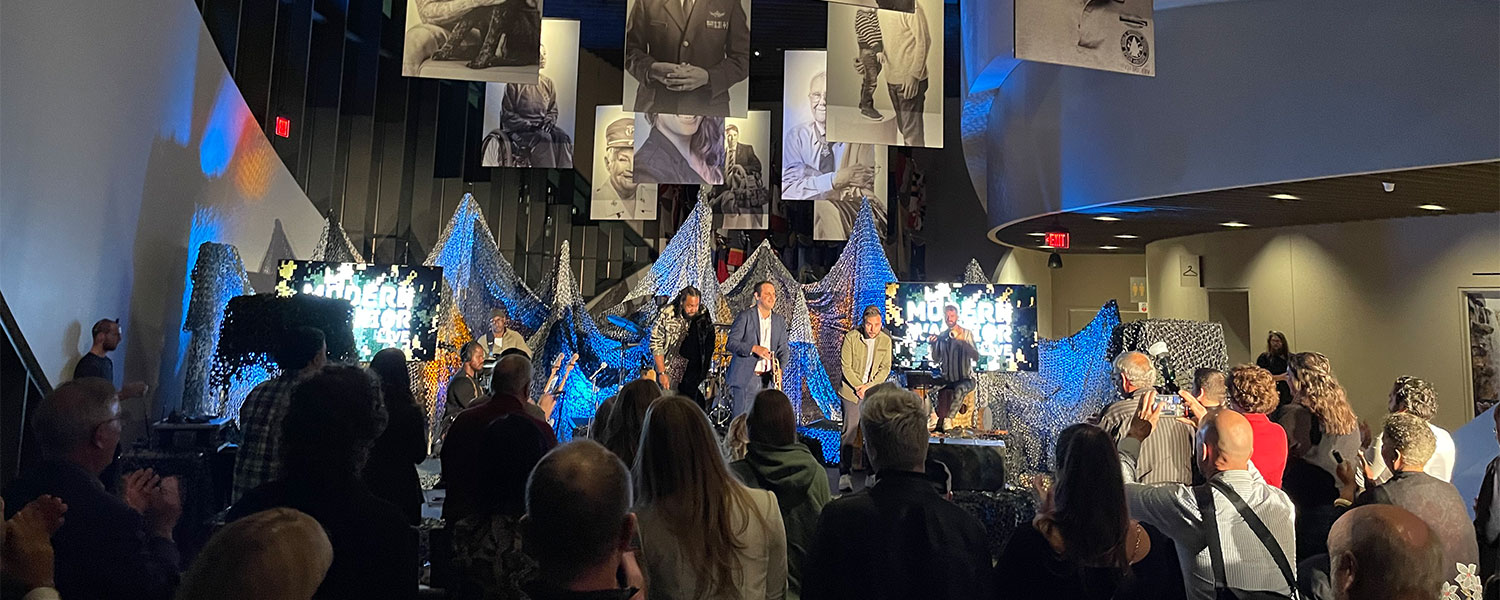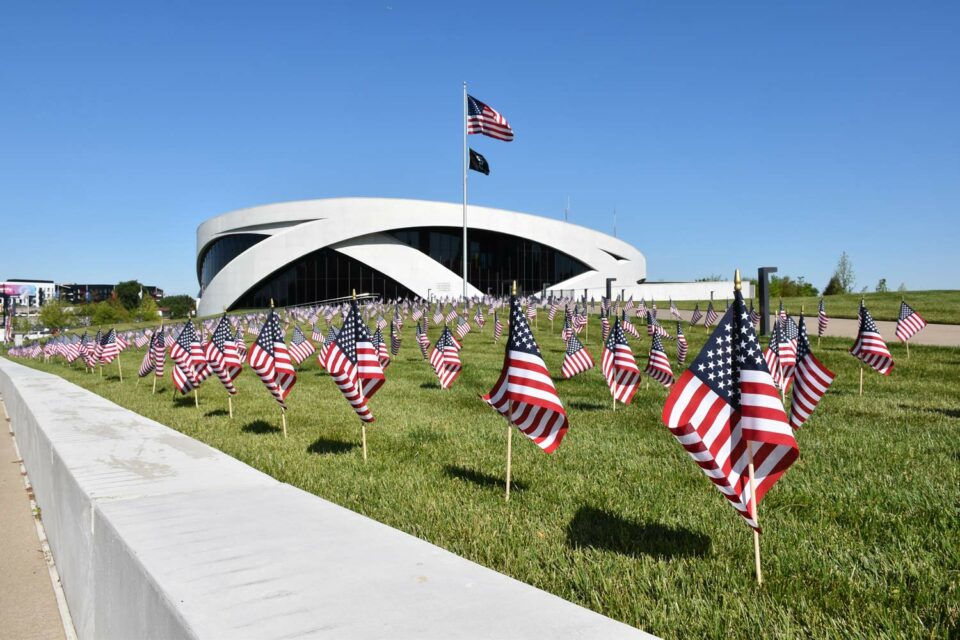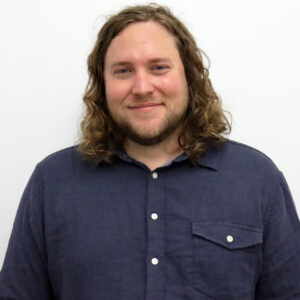Modern Warrior LIVE at the National Veterans Memorial and Museum
By Matt Aelmore

Matt Aelmore, M-AAA’s Grant Program Coordinator for Creative Forces, offers a glimpse into his firsthand experience attending a Creative Forces grantee performance in Columbus, Ohio, this past September. In his words, ‘The depth and impact of the Creative Forces program came to life as I witnessed the transformative power of the arts in action.’
Matt shares his nuanced reactions and thoughtful insights about the performance. Prospective applicants should note that the deadline for the next round of Creative Forces Community Engagement grants is January 17. For those unfamiliar with Creative Forces, it is a program committed to harnessing the therapeutic potential of the arts to support military service members, veterans, and their families. More details about Creative Forces Community Engagement grants may be found at maaa.org/creativeforces.

Exterior view of the National Veterans Memorial and Museum in Columbus, Ohio. Photo courtesy of the museum.
Modern Warrior LIVE at the National Veterans Memorial and Museum
I had the opportunity to travel to the National Veterans Memorial and Museum in Columbus, Ohio, to see a performance of Modern Warrior LIVE that chronicled the stories of two veterans, Modern Warrior LIVE’s own Jaymes Poling, a veteran of the war in Afghanistan, and Leon Bibb, a six-time Emmy–award winning broadcast journalist and veteran of the Vietnam War.
The Veteran Experience and PTSD
Poling and Bibb’s stories brought focus to the intergenerational discourse of the military experience. Poling enlisted in the military at age 17, served three tours with the 82nd Airborne in Afghanistan, including three-years fighting as a machine gunner and squad leader, and returned home to find himself struggling with Post-Traumatic Stress Disorder (PTSD). He was thinking about the close friends he had lost in action and finding it harder and harder to maintain relationships with his loved ones.
Bibb was drafted into the Vietnam War in 1966 to the tearful protests of his mother and was even married during two short days of rest before he completed basic training. After he served a one-year tour of duty in the Army, Bibb completed his journalism studies on the GI Bill, and he found a new duty in covering the war in Vietnam. At home, he covered the shooting of protesters by the Ohio National Guard at Kent State in 1970.
Healing through Music
The music for this performance, led by renowned jazz trumpeter Dominick Farinacci, served both as commentary and setting to these monologues. One highlight was that the performance was signposted by three variations of The Battle Hymn of the Republic. First, the version known to service members as Blood on the Risers, which was originally sung by paratroopers in WWII and exemplifies camaraderie in mutual mortality by bluntly parodying the lyrics of the the Battle Hymn with the story of a fatal training jump made by a paratrooper whose parachute fails to deploy (“Gory, gory, what a helluva way to die!” instead of “Glory, glory, hallelujah!”).
The placement of this song punctuated the angst present in Poling and Bibb’s stories of their first experiences in the service. A soulful gospel version of the Battle Hymn was sung after Poling’s story of losing a close friend in battle as if to allow the audience the ability to mourn with him. The final version of the Battle Hymn came toward the end as a meandering instrumental trumpet improvisation that echoed the theme of searching for personal redemption and healing as part of the modern warrior experience.
Connecting with the Veteran Community
After the performance, Poling, Bibb, and Farinacci hosted a Q&A session with the audience. Poling encouraged veterans to seek the benefits of VA services, and representatives from the local VA were also present to receive veterans. The veterans in the audience expressed that they felt their own experience was absolutely honored by this performance and even asked if this production would be coming to their hometown anytime soon.
Understanding through the Arts
As a civilian, this production of Modern Warrior LIVE provided me with both an emotional and intellectual understanding of the warrior experience that I never knew before. I felt connected to Poling and Bibb even though I’ve never encountered anything they’ve experienced. I understand better the bond that service members and their families can feel, and found clear affirmation that the arts can play a significant role in one’s healing process.


